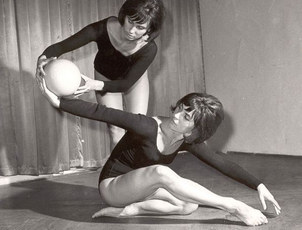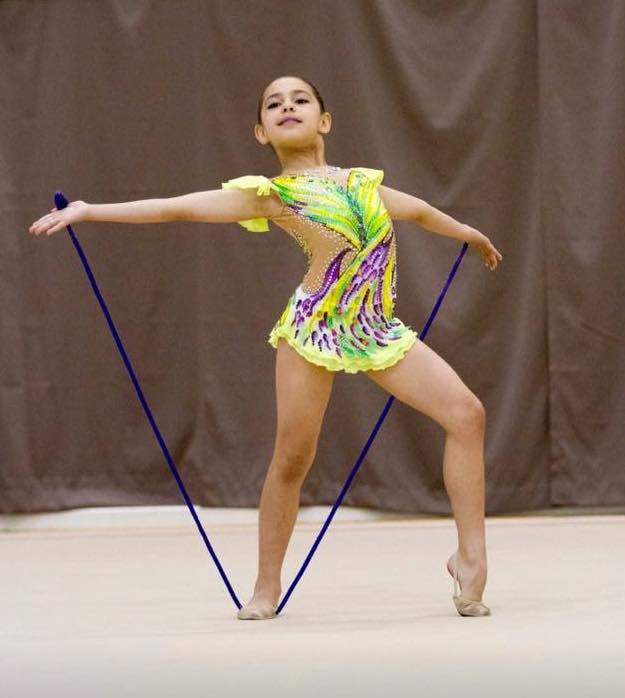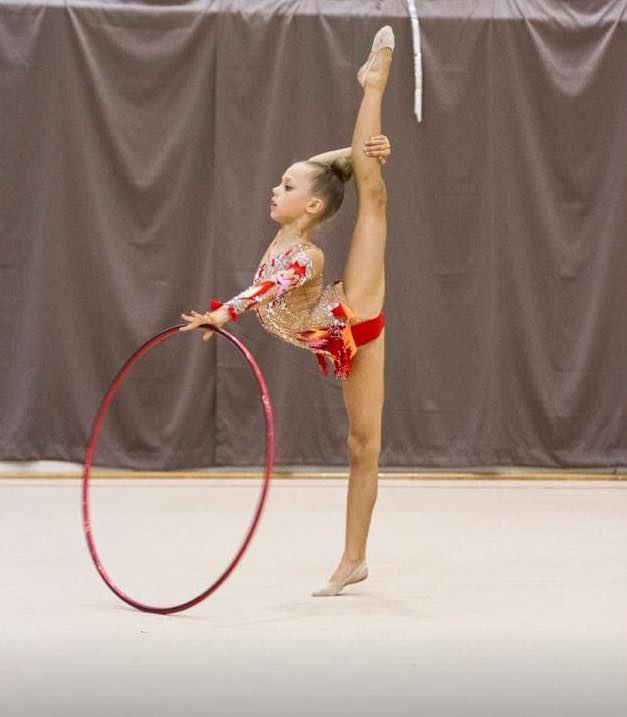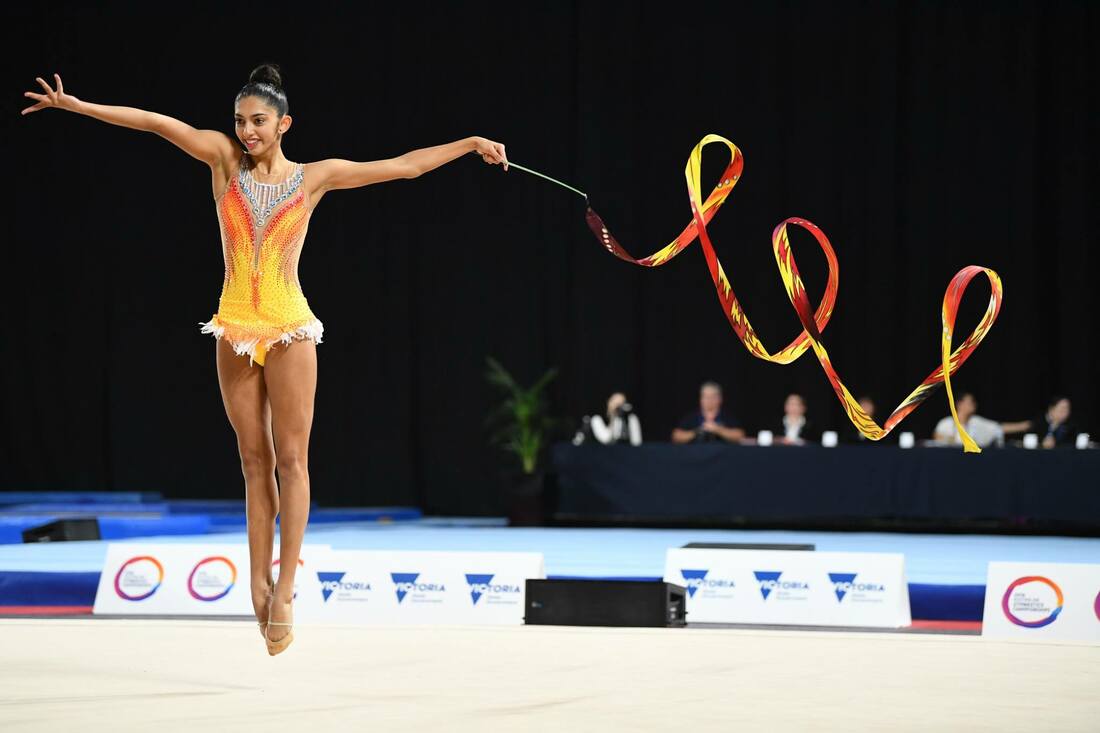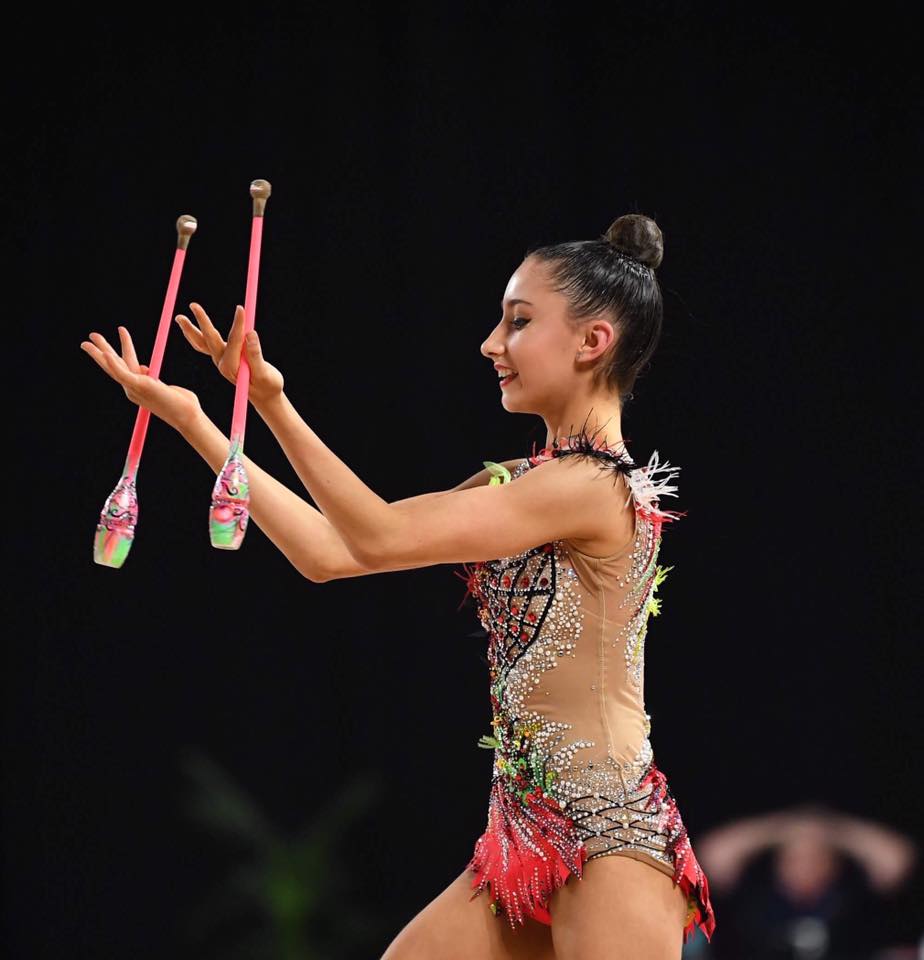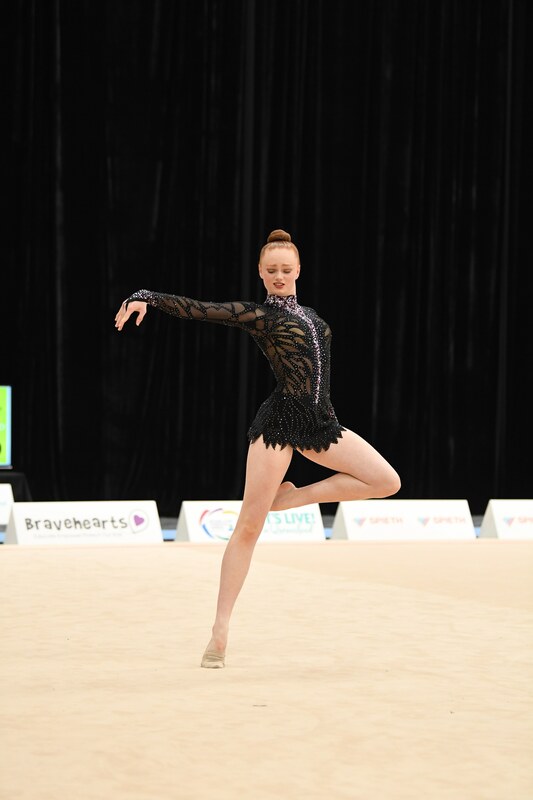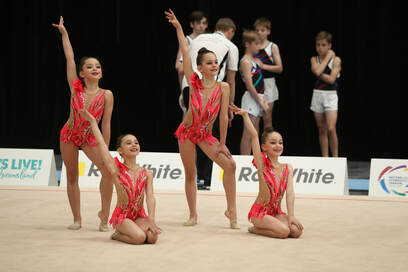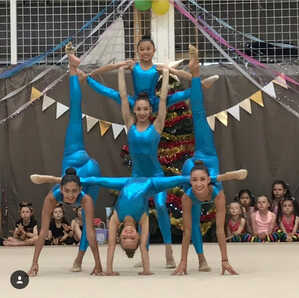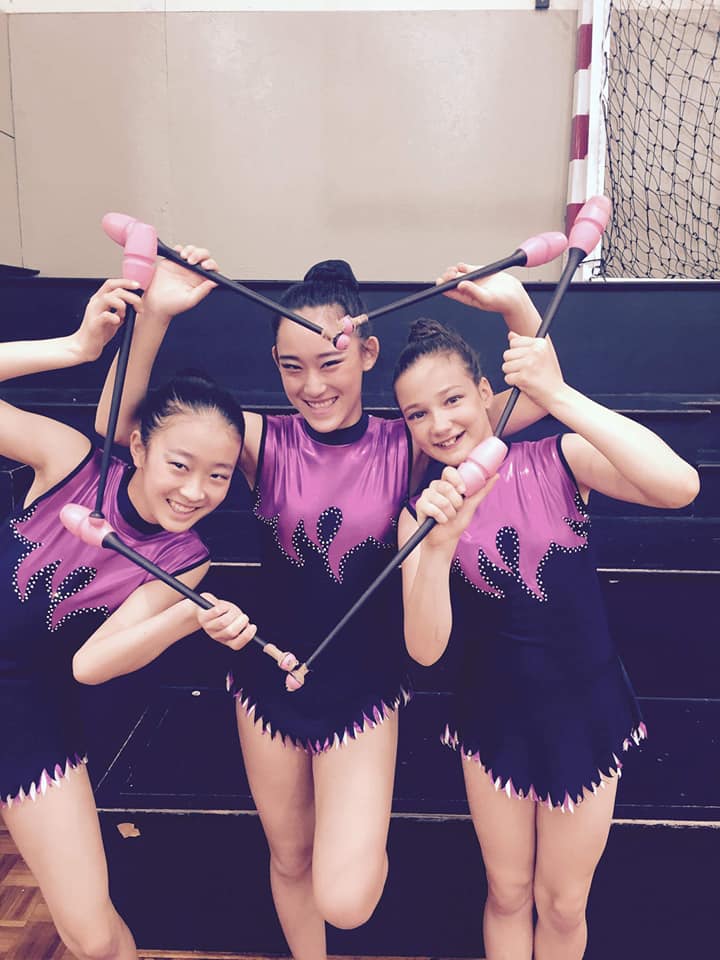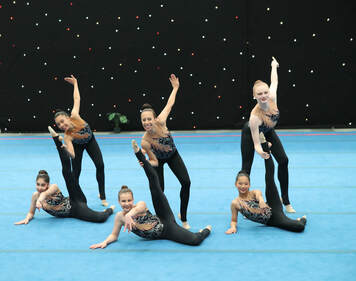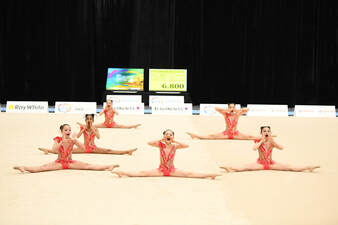|
RopeRope is made of a synthetic material, which retains the qualities of lightness and suppleness. The length of the rope is depending on the height of the gymnast. Fundamental requirements include leaps over the rope and skipping. Other elements include swings, throws, circles, rotations and figures of eight.
|
BallBall is made of rubber or synthetic material and is 18 - 20cm in diameter. Junior balls are available for the younger gymnasts. It should rest in the gymnast's hand and not rest against the wrist or be able to be grasped. Fundamental elements include throwing, bouncing or rolling. The gymnast must use both hands and work on the whole floor area whilst showing continuous flowing movement.
|
HoopThe hoop may be of a natural colour or be partially of fully covered by one or several colours, and it may be covered with adhesive tape (not fluorescent) either of the same or different colour as the hoop.
|
RibbonRibbon is stitched down both sides. At the top, a very thin reinforcement or rows of machine stitching for a maximum length of 5cm is authorised. This extremity may end in a strap, or have an eyelet (a small hole, edged with buttonhole stitch or a metal circle), to permit attaching the ribbon.
|
ClubsClubs are made of rubber or plastic. Different length clubs are available depending on the size of the gymnast. Fundamental elements include mills and small circles, asymmetric movements, throwing and catching. The Clubs must be used in both hands and in one hand. It is one of the more difficult pieces of apparatus to use.
|
FreehandFreehand is performances without apparatus where the emphasis is on style, technique and execution of dance skills. Freehand is most often seen in lower levels.
|
